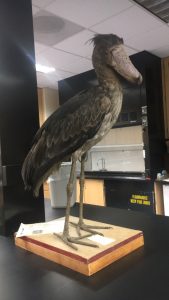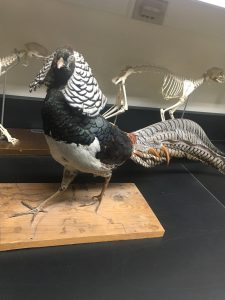Before this past weekend, I had no idea bird watching could be so fun and rewarding! Along with GRF, Ty, and a fellow Rose Scholar, I visited Cornell’s renowned Lab of Ornithology. However, to be honest, my favorite part of this event was the bird watching prior to the tour of the lab. I think one of the most valuable lessons gained from the day was to pay attention to your surroundings. I mean, think about. Most of us wake up every morning and walk to class without even knowing what animals, particularly birds, we are surrounded by! Birds are so diverse in sound and personality; they’re definitely more than just a pretty tune in the morning.
So here’s a few things I learned that might help you be a bit more aware of your surroundings. Hopefully this encourages you to stop by the lab or take a walking bird watch tour at some point during your Cornell experience!
As a beginner, you might find it logical to try and memorize different birds by the way they look; however, it would actually be easier to remember the way a bird acts and what they sound like before attempting to remember what different birds look like. The reasons behind this are that birds can be difficult to differentiate. Also, depending on where you are and the weather, you’ll rarely ever get a perfect view of a bird. A lot of the time you won’t even get to see the color on the bird, only shades and shape. Also, if you’re able to identify birds by their sounds, your life becomes a lot easier because once you hear a bird, then you can focus on looking for it (instead of looking for a bird without being able to identify the sound).
What I found most interesting was learning how to identify birds based on their behavior. For example, the American Robin tends to spend its time on ground, with bunny like hops. This is characteristic of many birds in the thrush category. Or take for example, the finch (forgive me I don’t remember exactly what type of finch) tends to hang out in groups high up at the tip of trees. They’re so chatty! They almost sound like they’re gossiping amongst themselves. Chick-a-dees literally make the sound “chick a dee dee dee”. They’re cute little fellows that are always curious and willing to get little closer to see what’s going on, especially when humans walk by. Blue jays are characterized by bully-like behavior and their chirp is a bit harsher than any of the other bird previously mentioned.
I know this sounds like it’s a lot to memorize, but I promise it’s so much fun! Once you see the birds for yourself, you’ll see how unique their personalities can be. It’s also really rewarding once you’re able to remember what a bird sounds/looks like and how it behaves. Now I can show off some of bird identification skills with some of my friends.
Following the walk, we got a tour of the lab. This was my first visit, and I definitely plan on going back to cover the whole lab. The tour offered a more biological and historical perspective of birds and background on the creation of the lab and what it holds. Below I have attached pictures of some pretty fancy birds, however, the lab is not limited to just these figures. I highly recommend stopping by to see the vast amounts of information the lab holds. Bird definitely is the word!



Thanks for sharing what you learned about bird watching! I didn’t know about the ways you can distinguish birds based just on their behavior. I also like your advice to be more aware of your surroundings. I wake up to the sound of birds outside my window every morning and I’ve never taken the time to identify them before, but I think tomorrow I may try out a few of your tips!
Hi Erika,
Thanks for your post! The last time I went to the Lab of Ornithology, I was there for a field trip looking at the collections of dead birds, so reading about your experience birdwatching was very interesting. I took a behavior class last semester that required me to observe squirrel tail behavior and completely agree that being more aware of our environment can be very rewarding. Sometimes, it can be easy to forget just how simply we can engage ourselves with just the life that exist in our environment. It really can make just walking around or waiting much more fun, while perhaps learning something unusual at the same time.